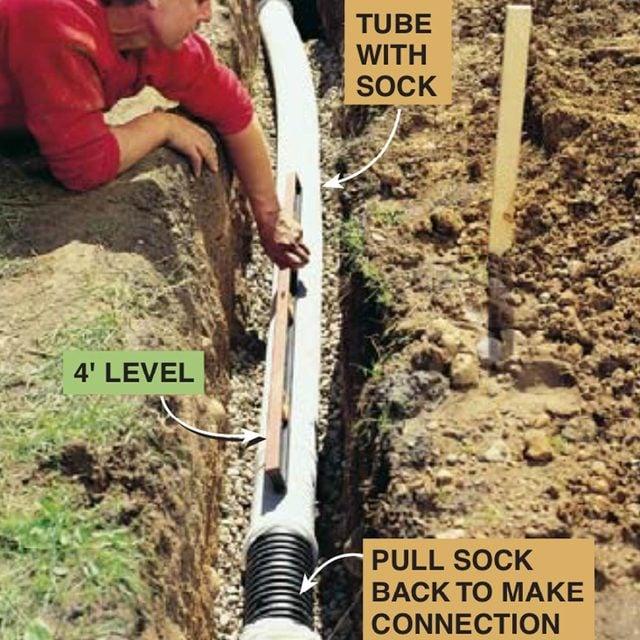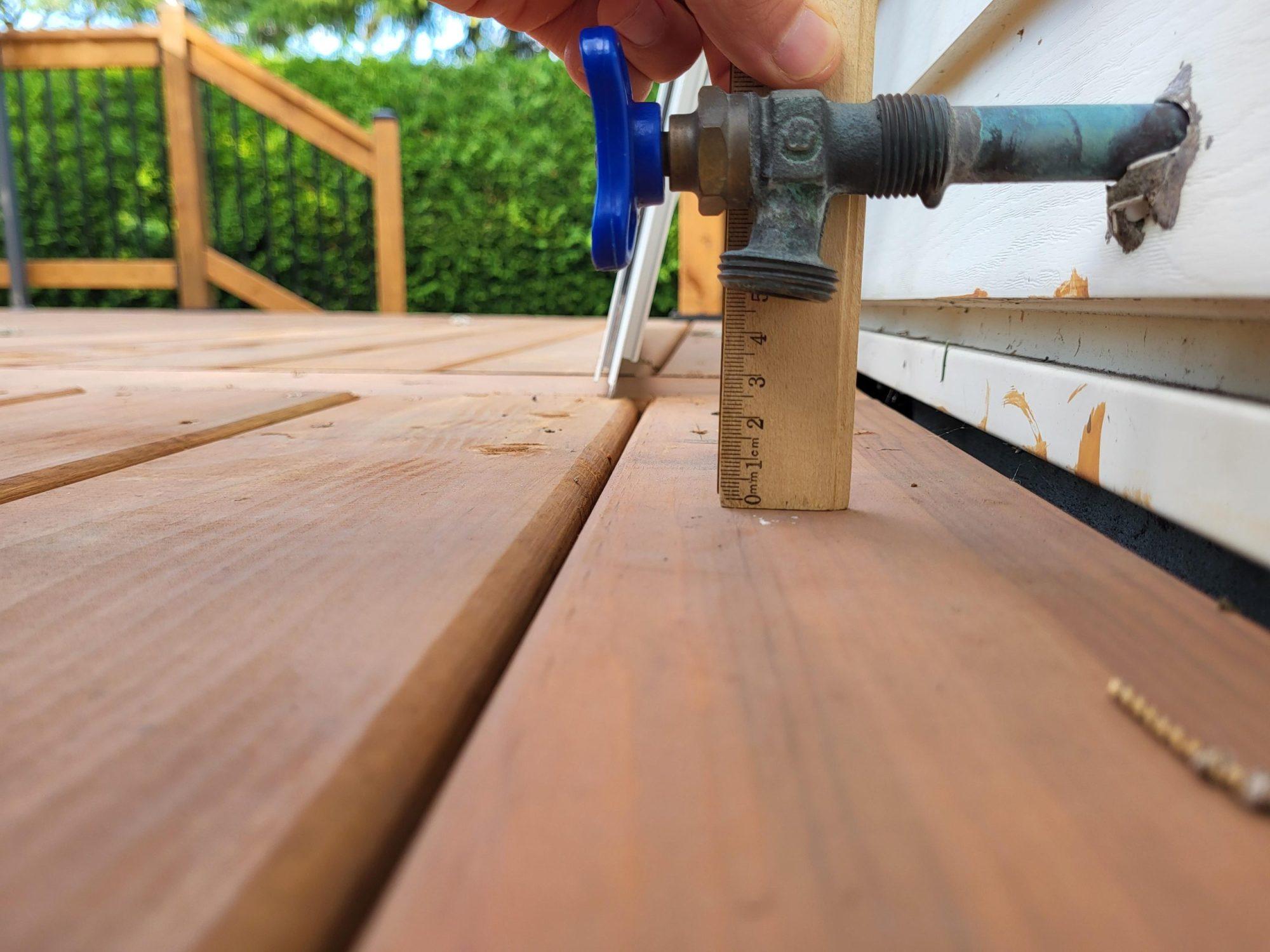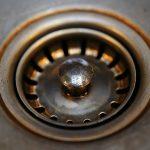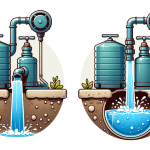When the rain starts pounding, homeowners immediately think of their roofs and gutters. Yet many overlook a critical aspect that safeguards their property: effective drainage. How we manage drainage issues during heavy rainfall events can make all the difference, protecting not only our homes but also our gardens. Sit back with a cuppa and read on for some important insights.
Contents
- Identifying Drainage Issues Sources
- Proactive Yard Drainage Improvement
- Practical DIY Drainage Solutions
- Unveiling Key Drainage Problems
- Significance of Optimized Lawn Drainage
- Post-Problem Drainage Maintenance Tactics
- Enhancing Drainage: Need Assistance?
- DIY Drainage Remedies for Homeowners
- In Conclusion
- Frequently Asked Questions (FAQ)
Identifying Drainage Issues Sources
Before delving into solutions for preventing drainage problems during heavy rainfall events, it’s crucial to recognize the common sources of these issues. A blockage in your storm drain, caused by debris or residue build-up, can lead to flooding and water accumulation. Additionally, inadequate soil grading or poor landscape design may prevent surface runoff from properly draining away from the property.
The foundation of your home, particularly the basement, can suffer from sub-standard drainage systems. According to the American Society of Landscape Architects, correct grading can significantly reduce water intrusion incidents by over 50%. Lastly, damaged or overwhelmed rain gutters may contribute to increased water pooling around your home.
Proactive Yard Drainage Improvement
In managing water runoff effectively during heavy rains, proactive yard improvement is indispensable. Start by assessing your garden’s natural slope: this is where water flows most naturally and where you ideally want to direct excess stormwater.
The importance of permeable surfaces cannot be understated in improving yard drainage. An Environmental Protection Agency (EPA) report suggests that for every 5% increase in permeable surface, stormwater runoff can be reduced by approximately 2.6%. So consider installing permeable paving stones or creating a rain garden.
Finally, adding native plants that absorb substantial amounts of water is another effective strategy. A single acre of wetlands can typically store 1-1.5 million gallons of floodwater, as mentioned in an EPA study.
Practical DIY Drainage Solutions

If your drainage system doesn’t perform optimally during heavy rainfall events, there are numerous do-it-yourself solutions you can employ. Try installing a sump pump in your basement to prevent water accumulation. You can also use French drains to reroute surface runoff and groundwater away from your property.
Another practical tool is a rain barrel: it can limit the amount of water flowing into your landscape while conserving rainwater for later usage. Do remember that regular maintenance is essential for these DIY solutions to be effective. As noted by the American Public Works Association, regular maintenance can prevent up to 25% of drainage problems during heavy rainfall events.
Unveiling Key Drainage Problems
Several key drainage problems include soil erosion, foundation damage, and environmental harm. Firstly, during heavy rainfall events, water erosion can lead to soil instability and loss, damaging your landscape design. Secondly, poor drainage can damage your home’s foundation and basements leading to irreversible structural integrity depreciation.
Last but not least, ineffective drainage not only affects your home but the environment as well. The Water Environment Federation reports that green infrastructure practices can reduce stormwater runoff by up to 65%, promoting more natural and balanced water cycles in our local ecosystems.
Significance of Optimized Lawn Drainage
Optimized lawn drainage is critically important, especially in areas prone to heavy rainfall events. If you’ve landscaped your garden beautifully but haven’t given much thought to drainage, all that hard work could go down the gurgler. Excess surface runoff can make your outdoor area waterlogged, ruin plant life and turn neatly manicured lawns into mud baths.
Additionally, improved drainage works hand-in-hand with sustainable environmental management. Stormwater runoff can adversely impact natural bodies of water, as observed by the Insurance Information Institute, attributing floods to over 90% of natural disasters in the United States.
Post-Problem Drainage Maintenance Tactics

You might have optimized your yard’s drainage once, but that doesn’t mean it’ll run optimally forever. Regular yard maintenance is just as essential. Make sure to clean your gutters regularly and check them for any signs of damage or obstruction.
Mulching is another proactive strategy you can adopt in garden areas prone to water pooling during heavy rainfall events. The mulch absorbs excess water, protecting your plants while improving overall soil conditions. Finally, regular weeding aids in removing roots that could potentially clog your drainage pipes, proving critical to maintain optimal performance.
Enhancing Drainage: Need Assistance?
If you’re still baffled by recurring drainage problems during heavy rainfall events this may be indicative of a larger issue beneath the surface. Getting professional expertise from a reputable organization like Master Plumbers Australia can delve deeper into the problem, provide tailored solutions and most importantly give you peace of mind knowing your home is guarded against future downpours.
Property drainage is a complex process that extends beyond the layman’s grasp, namely involving aspects of hydrology and civil engineering. But armed with some valuable property insights, everyone can contribute to protecting their homes and the environment overall in times of heavy rainfall.
DIY Drainage Remedies for Homeowners
If you have flood-prone areas around your home, consider implementing a French drain, which is essentially a trench filled with gravel and a pipe that diverts water away from the house.
- The first step involves digging a sloped trench that leads from the flood-prone area to your chosen discharge point. Remember: the slope needs to be heading downwards away from your home!
- Next, layer some landscape fabric in, then pour a bag of gravel into the trench..
- Then place a perforated plastic pipe (with slits cut across it) on top of the gravel and cover it with more gravel till it’s level with the surrounding ground.
- Finally, fold the excess landscape fabric over the gravel, essentially wrapping up your French drain.
Water flows into the pipe and gets channeled away. The top layer of soil can still be used for plants since this won’t interfere with the French drain functionality. This method is highly regarded by various civil engineering and environmental science authorities as it is efficient and eco-friendly.
If you want to take things a step further, you might consider building a rain garden. These are specifically engineered and planted depressions in the ground, designed to catch and hold rainwater runoff from rooftops or impermeable surfaces such as driveways. According to an Environmental Protection Agency (EPA) report, for every 5% increase in permeable surface, stormwater runoff can be reduced by approximately 2.6%. The plus side? Excellent water management and an aesthetically pleasing accent to your landscape.
To build a rain garden:
- Identify and mark a suitable area where water tends to flow towards after rainfall, ideally at least 10 feet away from the foundation of your home.
- Next, dig out the marked area, removing the top layer of grass and soil. Use this excavated topsoil later on to create a berm, essentially mound of earth which surrounds your rain garden to hold in water.
- Fill the pit with a mixture of sand, compost, and topsoil to create an environment conducive for water absorption.
- Last but not least: time for planting! You can select native plants since they are adapted to local conditions and usually more resistant to pests and diseases.
This two-pronged approach i.e., French drains combined with rain gardens is not only effective but also boosts the attractiveness of your home. Double win!
In Conclusion
Poor drainage during heavy rainfall can lead to damaging floods on your property – fortunately these can be avoided with proper planning and maintenance. DIY remedies such as adding French drains or installing a rain garden provide functional yet eco-friendly solutions. Armed with these steps under your tool-belt, you’re now ready to waterproof your home and garden.
Frequently Asked Questions (FAQ)
Why is proper drainage important?
Proper drainage is vital to prevent water pooling and potential flooding that can lead to structural damage to your property. Drainage also prevents the development of stagnant water, which may lead to harmful conditions like mosquito breeding, and contributes to a healthier and more sustainable ecosystem.
What is a French drain?
A French drain is a trench filled with gravel or rock or containing a perforated pipe that redirects surface water and groundwater away from an area. This type of drain is particularly useful for preventing groundwater from penetrating or damaging building foundations.
How can I create a French drain?
Creating a French drain involves digging a sloped trench, adding landscape fabric and filling it with gravel. Then, you insert a perforated pipe and cover it with more gravel. To finish, fold the excess fabric over the gravel.
What is a rain garden?
A rain garden is a planted depression or a hole that allows rainwater runoff from impervious urban areas, like roofs, driveways, walkways, parking lots, and compacted lawn areas, the opportunity to be absorbed.
Why are native plants beneficial for rain gardens?
Native plants are adapted to local weather conditions and therefore require less watering and less maintenance than non-native plants. They are also often more resistant to local pests and diseases.
How can I manage rainfall runoff?
Management of rainfall runoff can be done through various means including improving yard drainage, installing permeable surfaces, planting native plants that can absorb rainfall, and creating a rain garden or French drain.
What maintenance is needed for proper drainage?
Regular yard maintenance, such as clearing gutters of debris and checking them for damage or obstruction, is essential. Similarly, maintenance of your DIY drainage solutions is also crucial to ensure their effectiveness.
- Can I Get a Plumber to Help Me Install An Under Sink Water Boiler in Our Office Kitchen? - September 14, 2024
- Can a Plumber Help Me Clear a Badly Clogged Toilet? - September 4, 2024
- Can a Plumber Help Me to Replace a Bathtub Drain Stopper? - August 29, 2024
Related posts:
 What Are Your Top Tips to Help Prevent Shower Drain Clogs?
What Are Your Top Tips to Help Prevent Shower Drain Clogs?
 How Do I Prevent Grease Build-Up in My Kitchen Pipes?
How Do I Prevent Grease Build-Up in My Kitchen Pipes?
 How Do I Prevent Hair From Clogging My Shower Drain?
How Do I Prevent Hair From Clogging My Shower Drain?
 How Do I Prevent Food Scraps From Clogging My Kitchen Drain?
How Do I Prevent Food Scraps From Clogging My Kitchen Drain?
 How Do I Know If My Rainwater Tank Pump Is Working Properly?
How Do I Know If My Rainwater Tank Pump Is Working Properly?
 What Should I Do If My Bathtub Is Slow to Drain?
What Should I Do If My Bathtub Is Slow to Drain?



